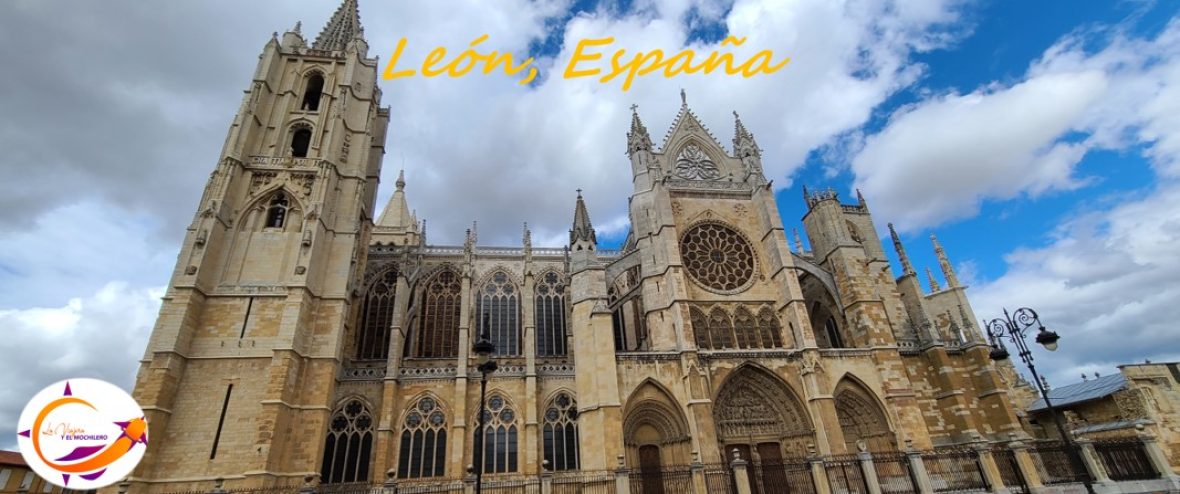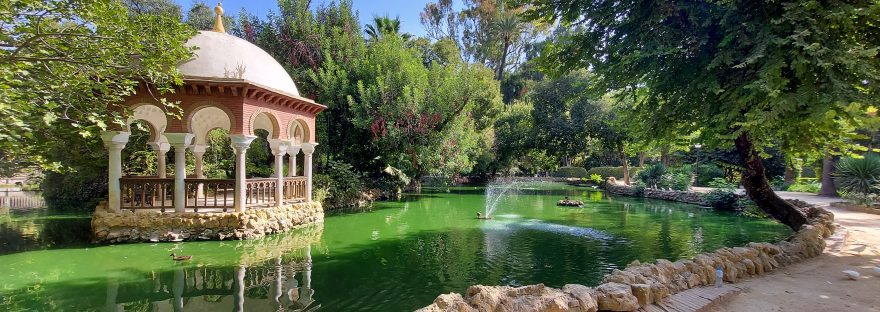The first urban park of Seville is the Infanta Maria Luisa Fernanda Park, better known as Maria Luisa Park. It is a wonderful area, where tranquility and calmness are breathed in an extension of 34 hectares. It was declared in 1983 as an Asset of Cultural Interest in the category of Historical Garden.
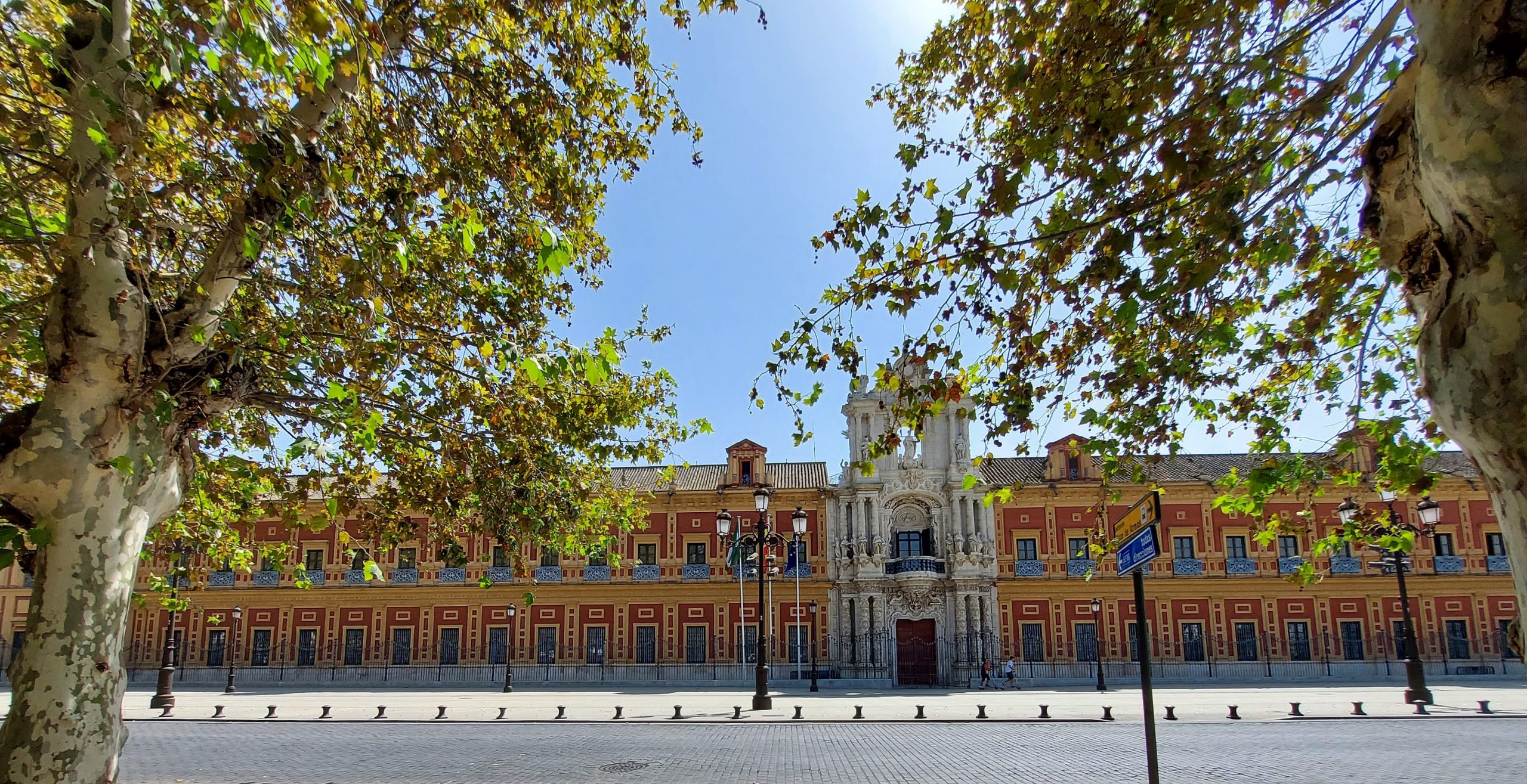
The spaces that make up this beautiful park originally belonged to the private gardens of the San Telmo Palace. In 1893 the infanta María Luisa Fernanda de Borbón, wife of the Duke of Montpensier, after becoming a widow, gave the city an important part of the gardens of San Telmo and in 1914 the María Luisa Park was inaugurated.
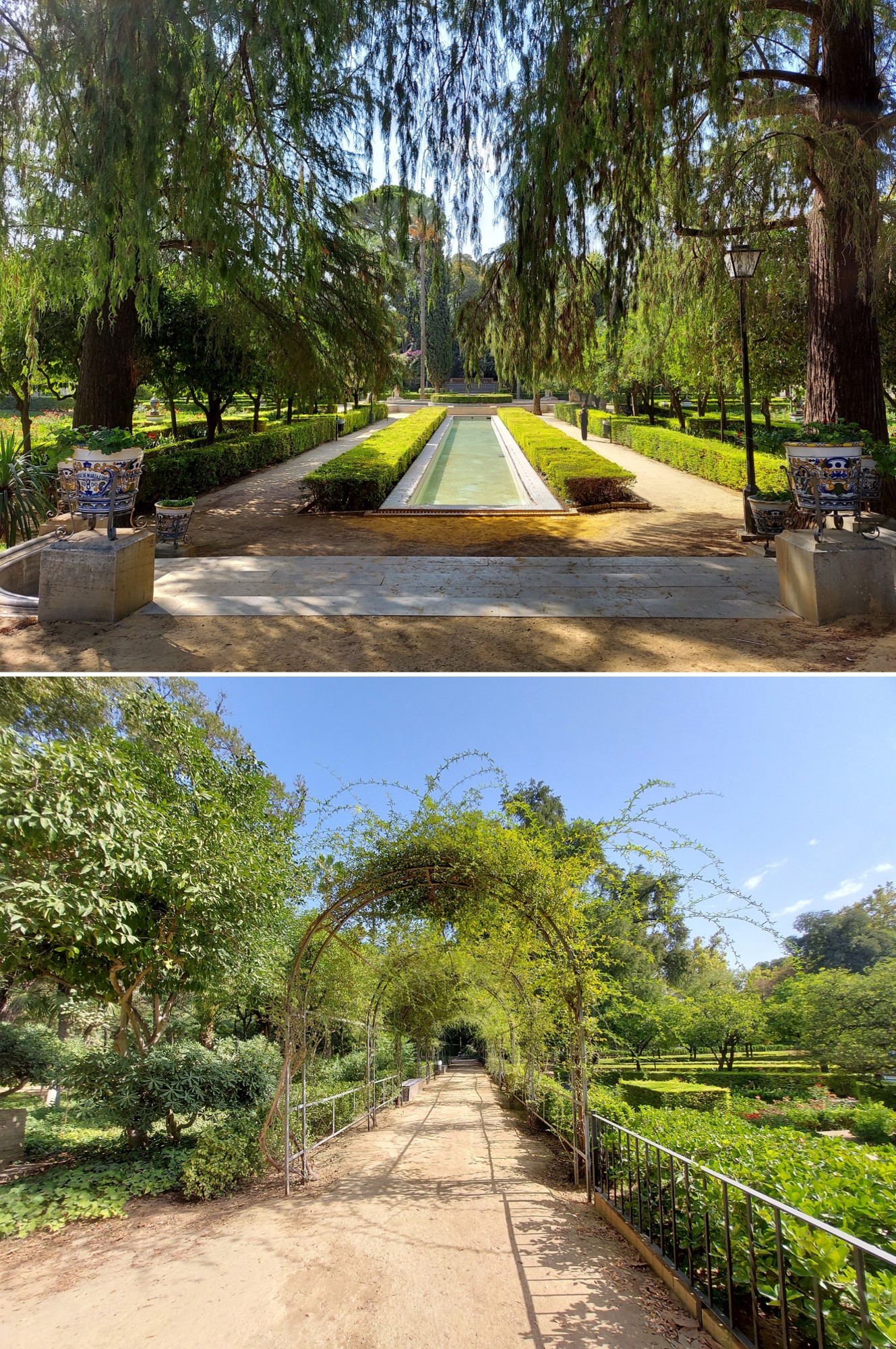
It was precisely for the Ibero-American Exposition of 1929 that the Maria Luisa Park took the form that we know today. The French landscape architect Jean-Claude Nicolas Forestier was hired for the landscaping work. Adapting the climate and landscape of Seville, Forestier transformed what were palace gardens, which already had some decorative structures, into a public park with more monumental and recreational spaces. The French landscape architect took inspiration from the beautiful elements he observed during his travels in Spain, for example, the influences of the Alhambra in Granada, the Generalife, the Retiro Park in Madrid and, within the city of Seville itself, its Alcazar.
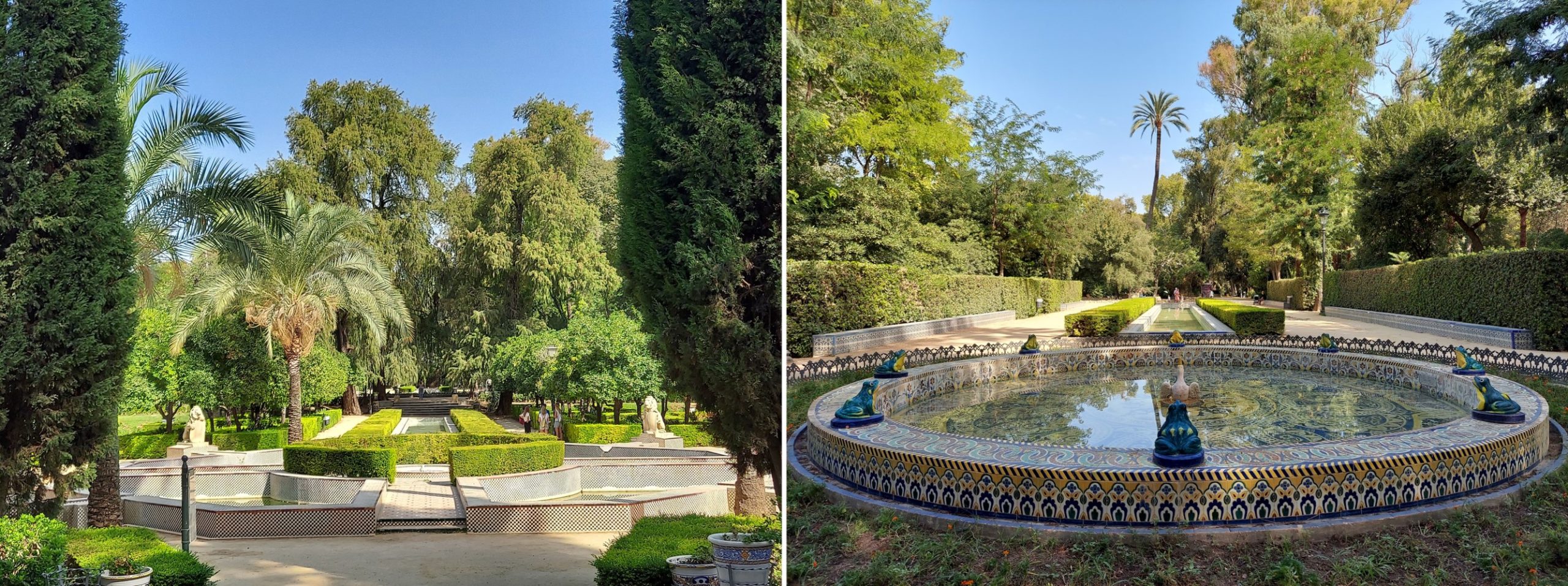
Forestier worked with the large wooded masses creating several axes on which he would organize the traffic circles. On a main axis he would place the Fountain of the Lions, the Fountain of the Frogs and the Lotus pond. Then he would create two axes, the avenues of Hernán Cortés and Pizarro, crossed by several transverse roads and paths, to which traffic circles were added. The Sevillian air was obtained through the use of tiles and water, which became a very present element to achieve an environment of greater freshness.
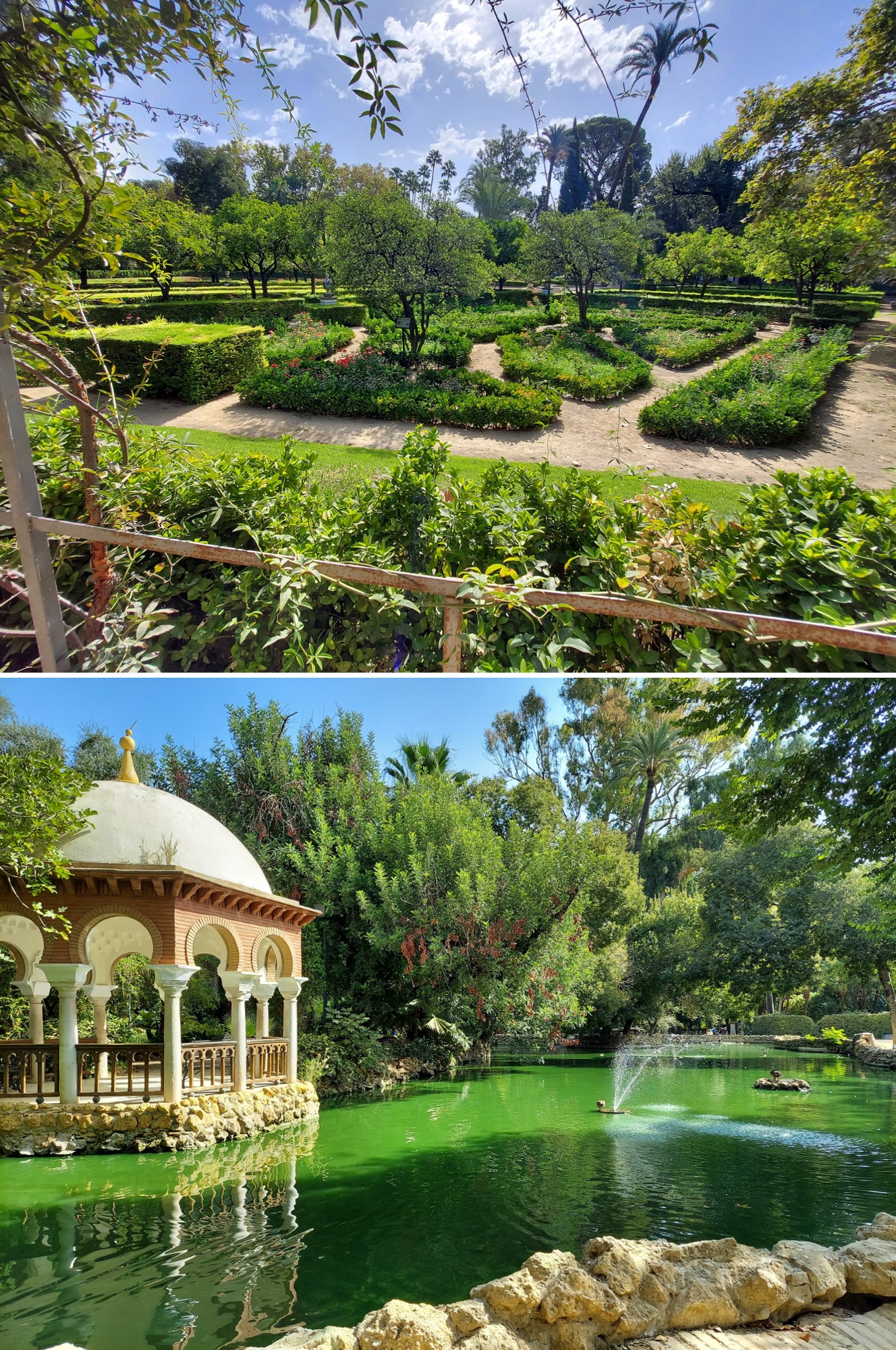
The Maria Luisa Park is preserved in a form quite similar to the one it had for the 1929 Exposition. It is structured by a combination of independent smaller gardens, organized around ponds, fountains, monuments and pavilions.
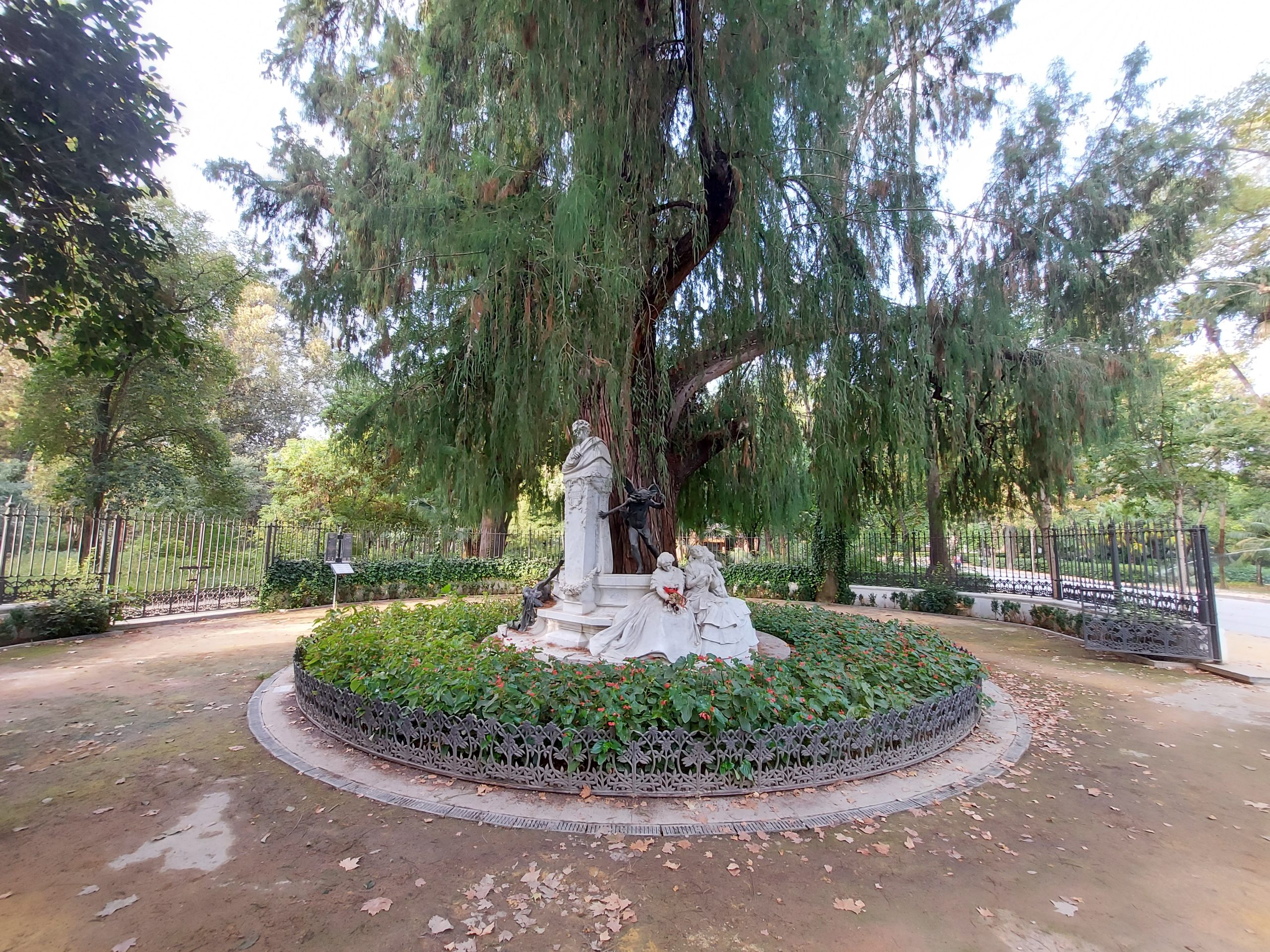
Then came the traffic circles, some 28 of them, which are spaces that share the public atmosphere of the park and at the same time become intimate. In the design of these traffic circles, decorative elements representative of regional and local history have been used, such as those found for example in the courtyards of Andalusian houses.
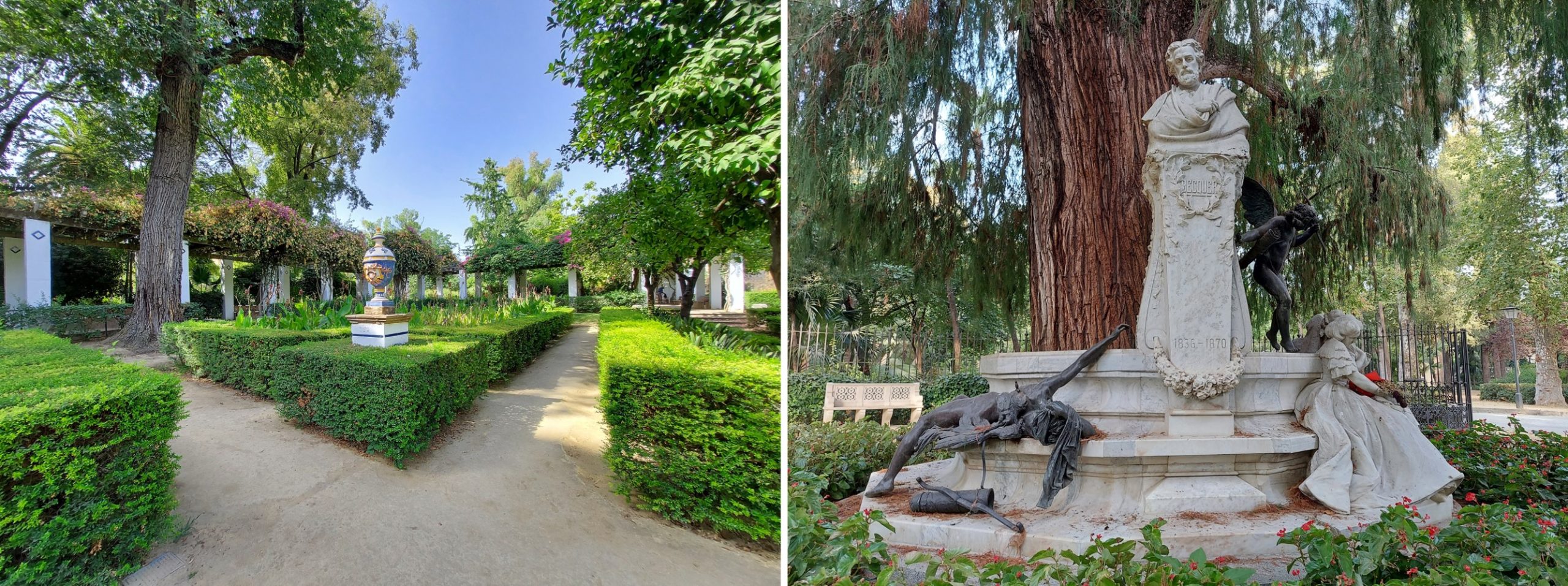
Thus we find one of the most visited and romantic traffic circles, the Glorieta Bécquer. In it, around a marsh cypress, stands a monument in white marble and bronze dedicated to the poet Gustavo Adolfo Bécquer. The main figure is the marble bust of the poet that rises above the others on a pedestal of the same material with the surname “Bécquer” and the date of birth and death.
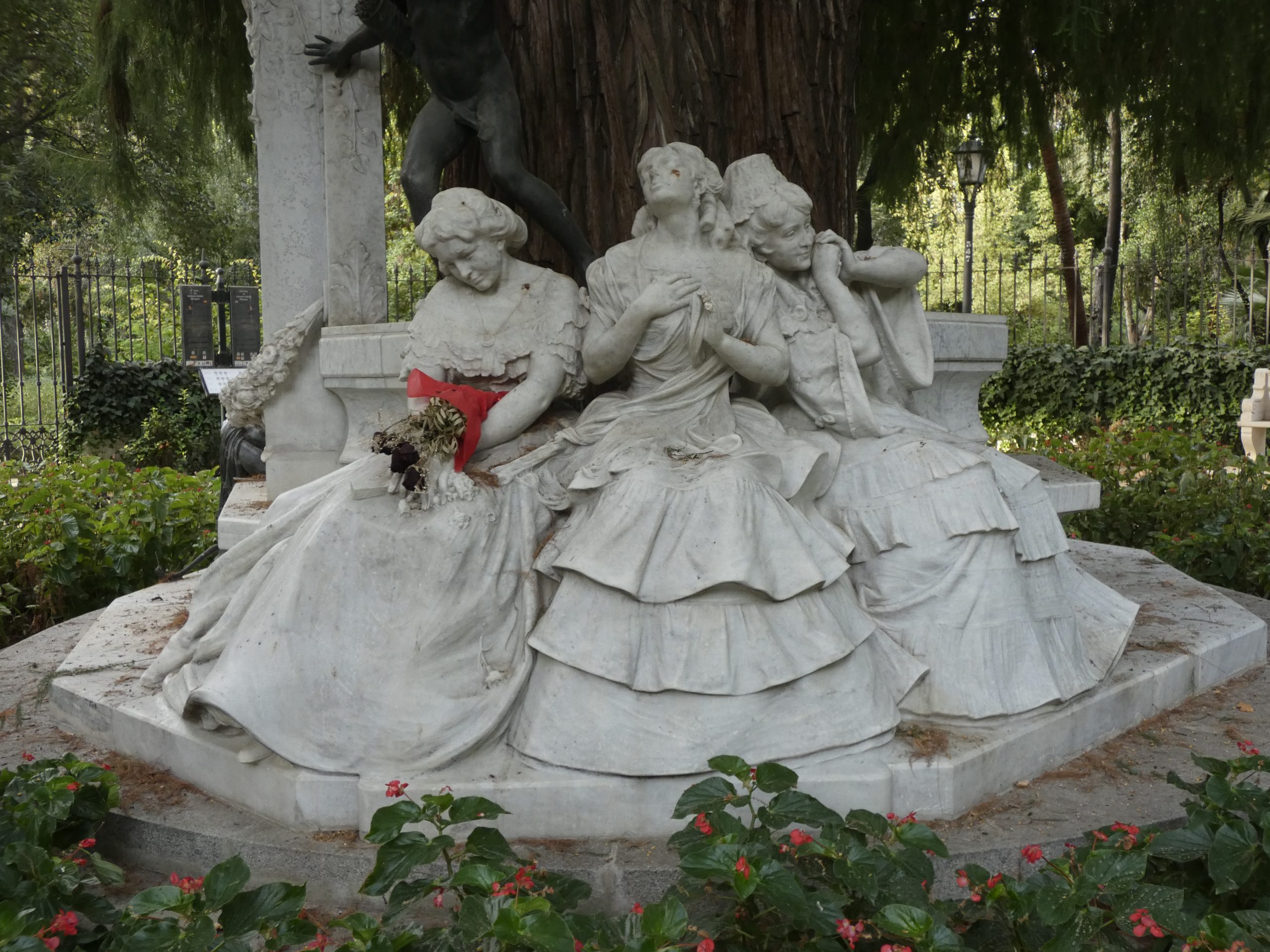
This gazebo features a marble ensemble of three women seated on a bench symbolizing love coming, love present and love lost. The first woman, the youngest, is shown blushing with foreboding. The second, older, is shown enjoying the fullness of love. The third, the oldest, looks as if she is suffering from melancholy.
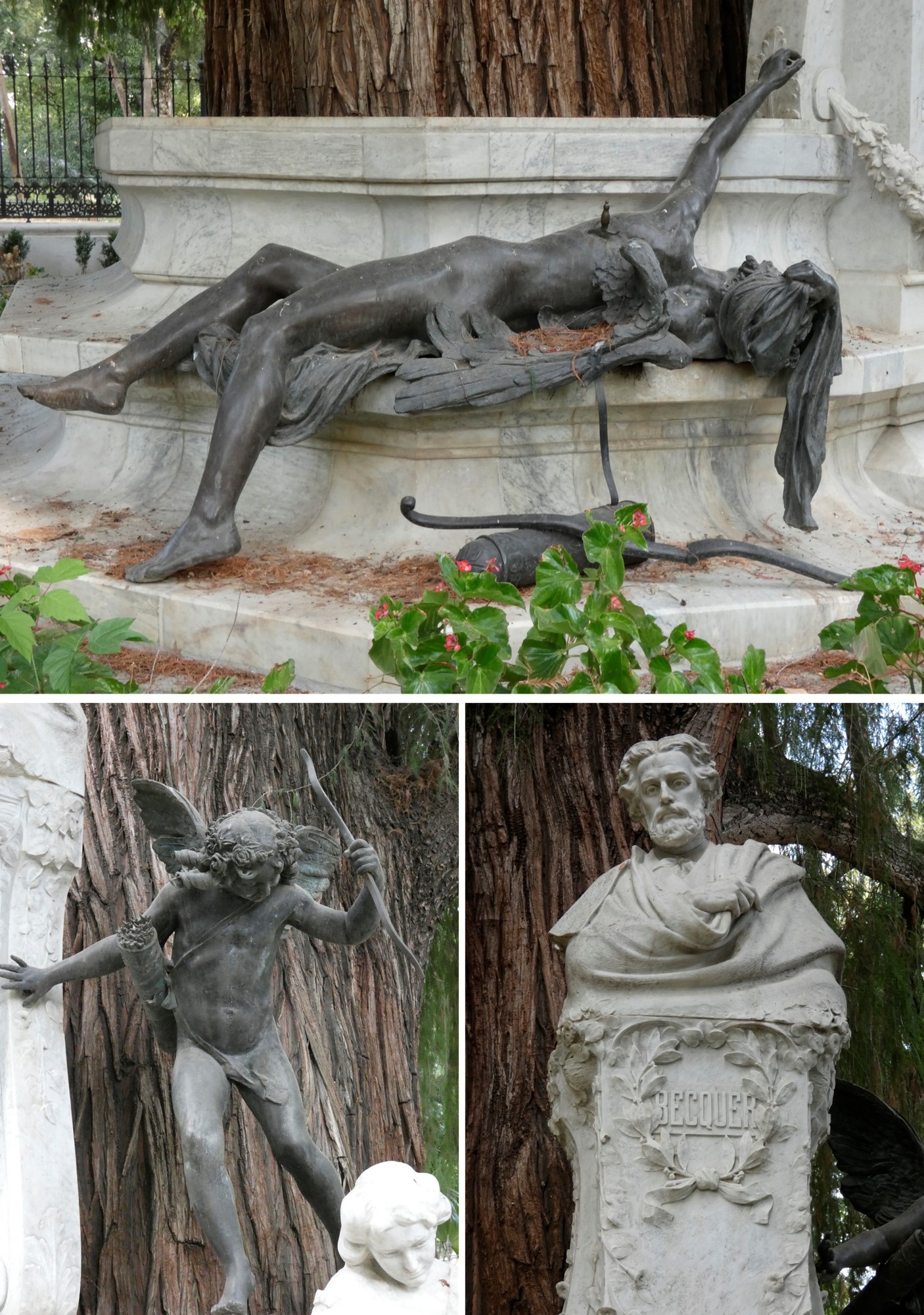
In addition, two figures can be seen that were worked in bronze, standing out against the white marble of the other sculptures. These figures represent the “wounded love” or recumbent Eros and “the love that wounds” or Cupid.
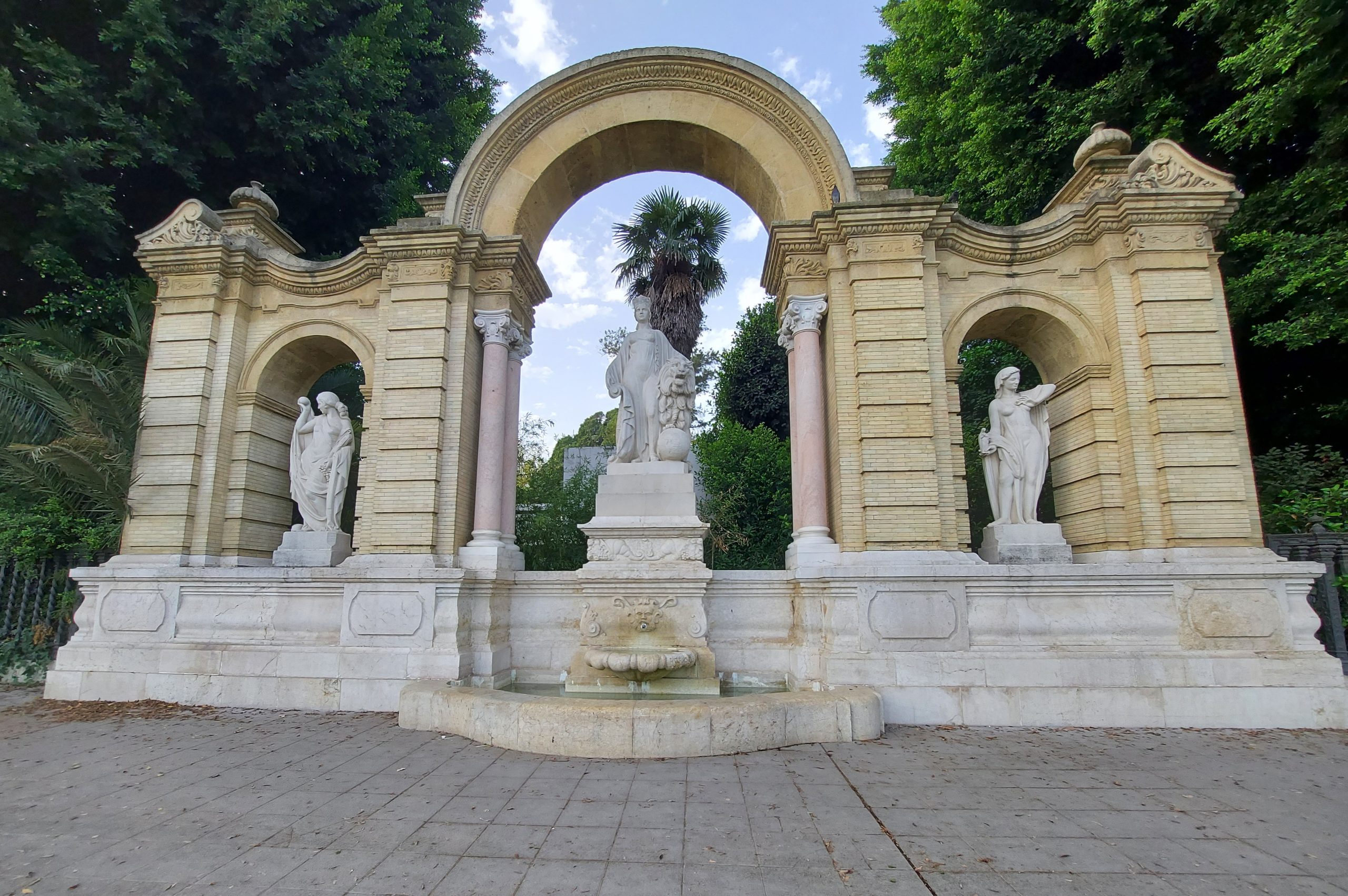
The San Diego traffic circle is located at one of the entrances to the Maria Luisa Park in Seville, in the area of the Plaza de España. In the Ibero-American Exposition of 1929, it decorated the main access area. The whole structure was designed by Vicente Traver in 1927.
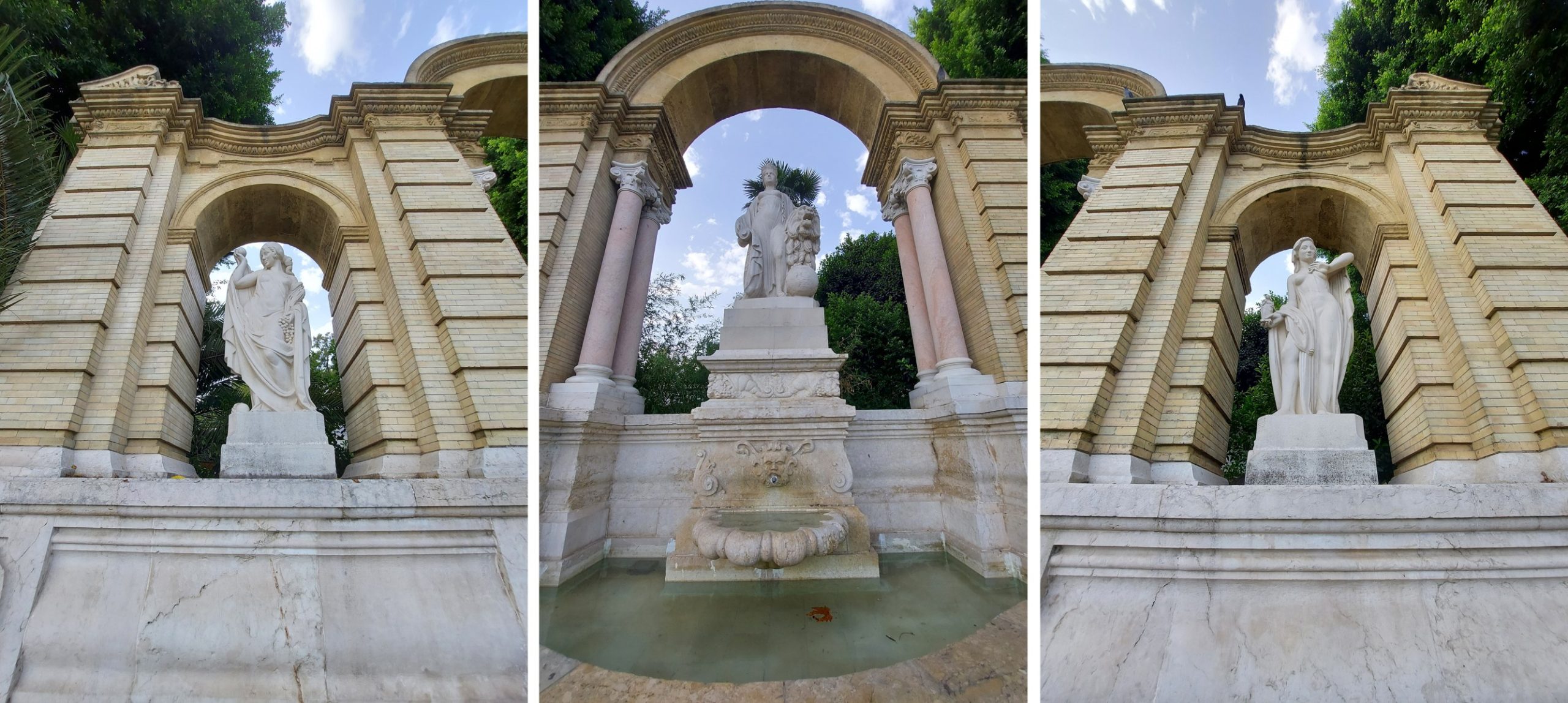
The arches are supported by red marble columns. The monument has a plinth with a fountain. From left to right, the sculptures represent the following allegories: material wealth, Hispania and spiritual wealth.
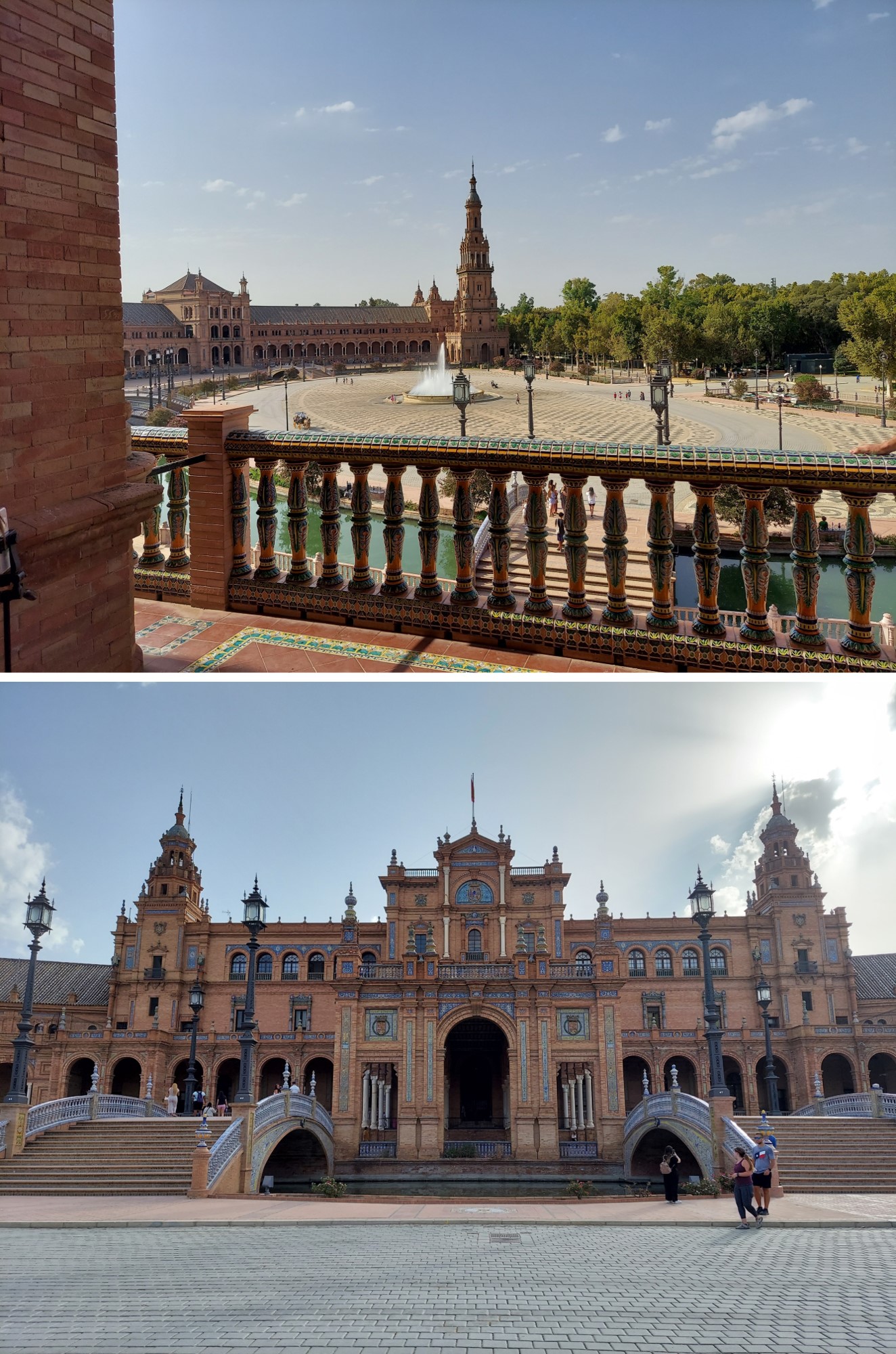
Later, the “Plaza de España” and “Plaza de América”, built especially for the Ibero-American Exposition of 1929, were integrated into the northern part of the park. Since 1992, the “Plaza de España” has been the home of the Military History Museum.
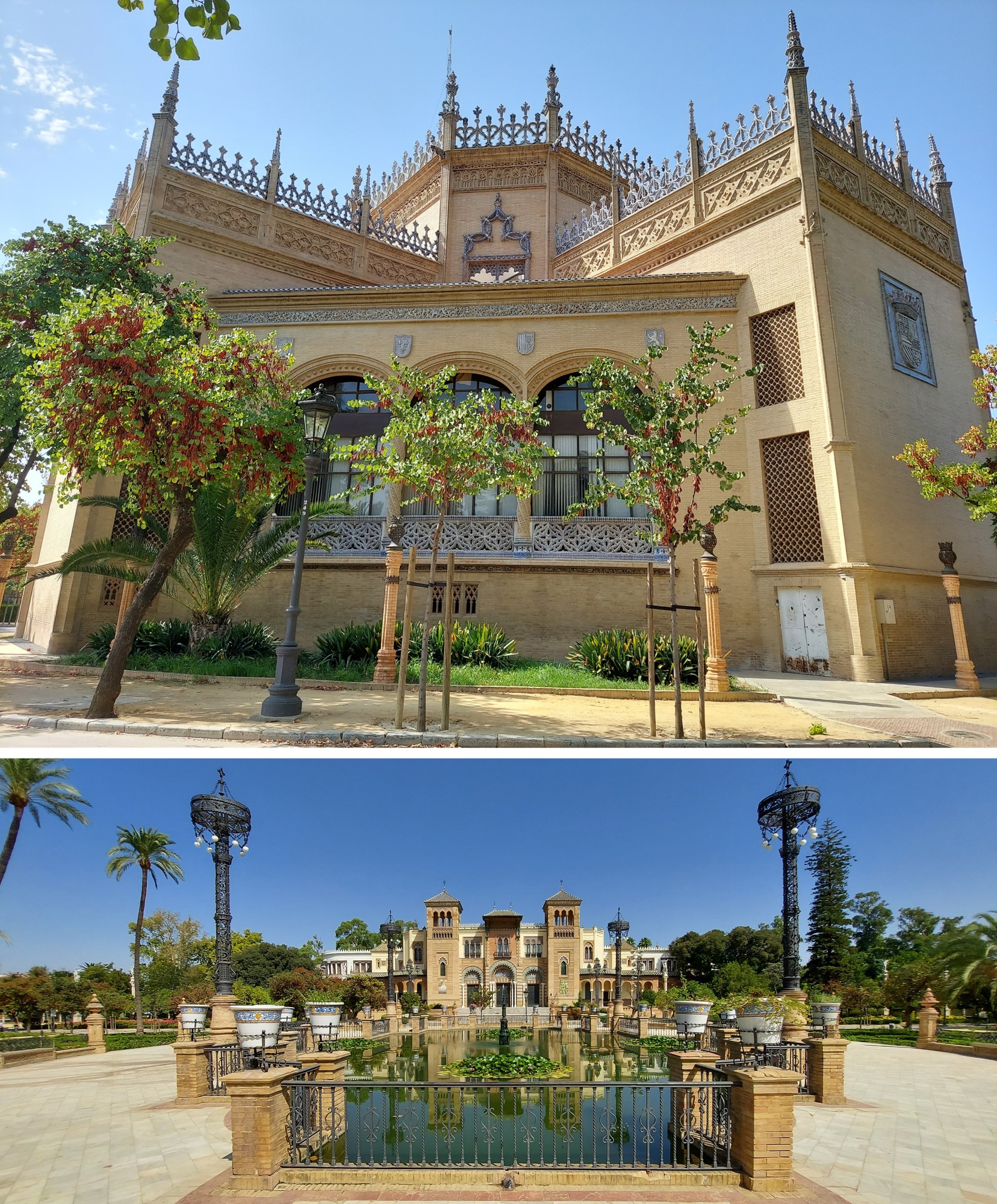
In the southern part of the park is located the Plaza de America, which has three main buildings, designed by the architect Anibal Gonzalez between 1913 and 1916 for the Ibero-American Exposition of 1929, all with different architectural styles. Thus we have the Royal Pavilion, which was conceived as an exhibition center, the Museum of Popular Arts and Customs, which served as a pavilion of ancient art and the Archaeological Museum was the former pavilion of fine arts for the Ibero-American Exposition.
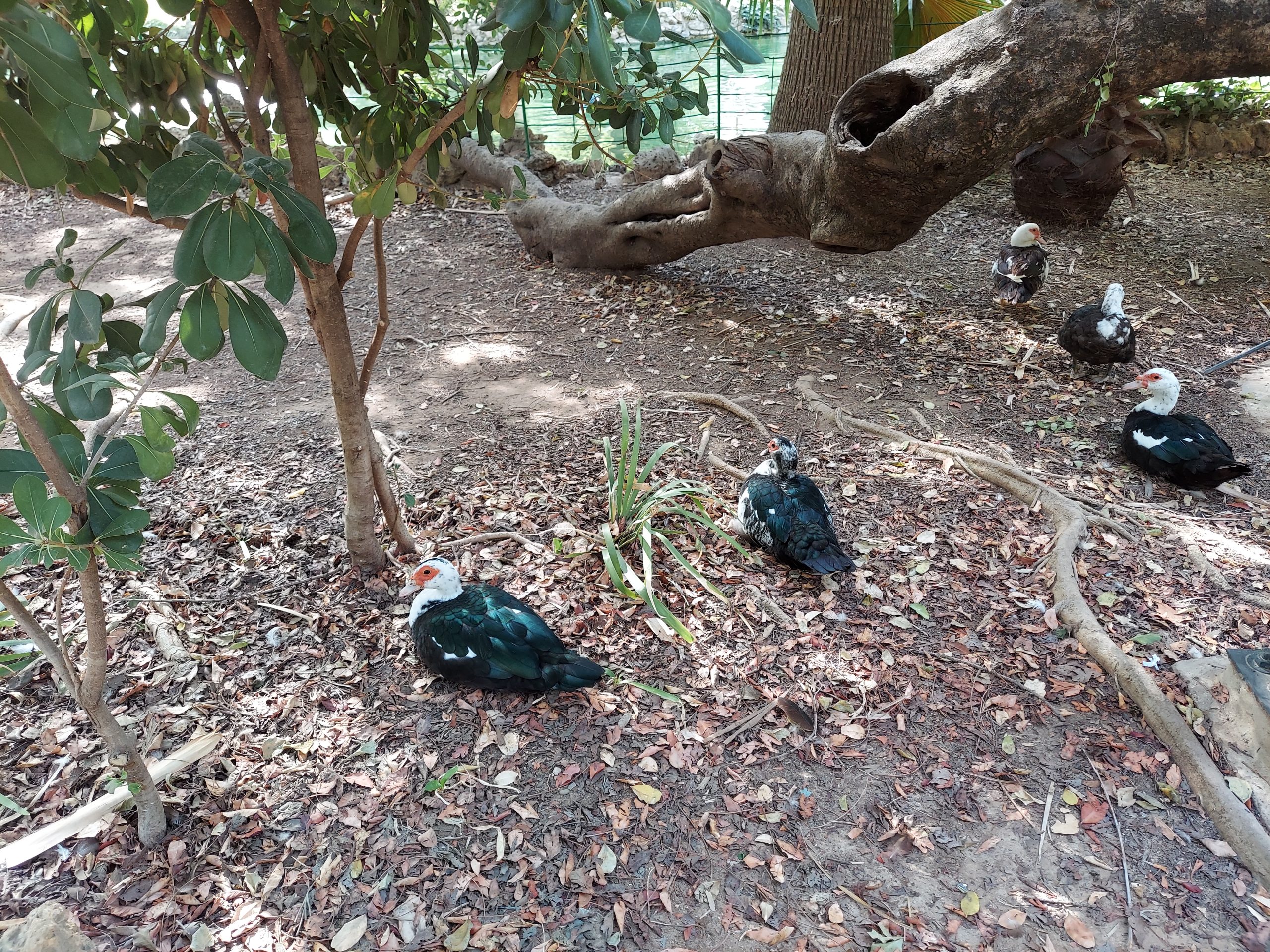
It also contains a great variety of avian species, including peacocks and songbirds, swans and ducks that sometimes wait to be fed by passersby with bread or grains of those sold in places like the Plaza de America.
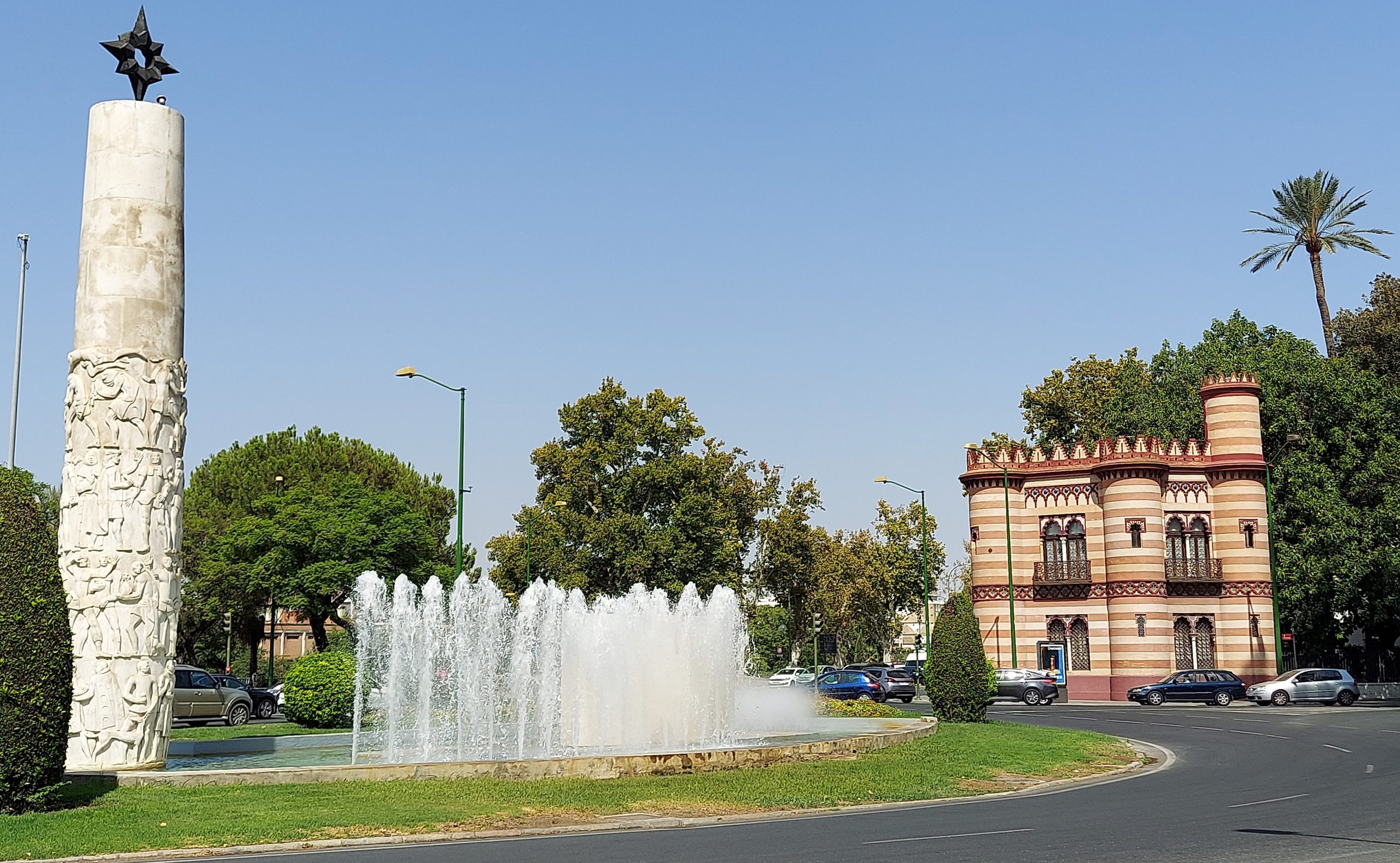
Just off the Parque de Maria Luisa, you will find a structure that immediately stands out, it is the “Costurero de la Reina”. It is the first neo-Mudejar building in Seville and was located in the area of the San Telmo Gardens, hence its proximity to the park.
***************
Resources:
https://es.wikipedia.org/wiki/Parque_de_Mar%C3%ADa_Luisa
https://www.sevilla.org/servicios/medio-ambiente-parques-jardines/parques/parques-y-jardines-historicos/parque-de-maria-luisa
https://saposyprincesas.elmundo.es/actividades-ninos/sevilla/aire-libre/parques-y-jardines/parque-de-maria-luisa/
